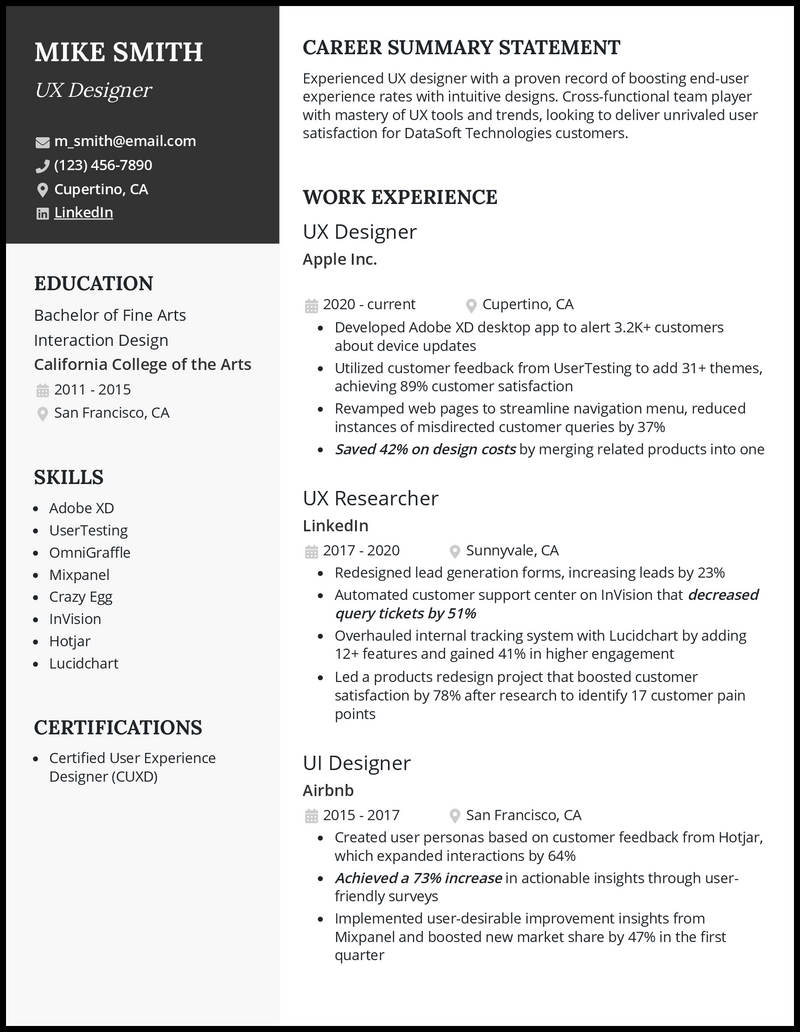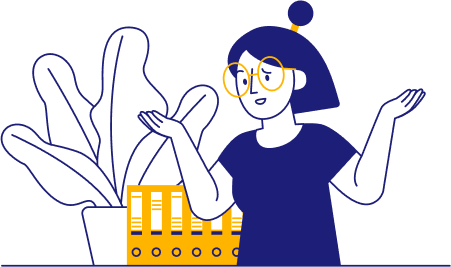

With a half-filled brainstorming paper on his desk, Mike contemplated his work history: He was no stranger to the user’s experience, having built up a foundation in UI design. He’d even honed his skills further through a UX researcher job with LinkedIn and his first role as a UX designer working for Apple!
Not even the sky was the limit for Matt when it came to landing awesome, fulfilling jobs. Oh, but what about his resume? After four years in his current job role, surely he could use some resume tips and quality resources to boost it to the next level.
Given his background in usability and design, Mike was already familiar with how much time he could save with a good resume template, and once he looked through our UX designer resume examples, he started working immediately.






Your resume’s skills section is a crucial opportunity to showcase your expertise and how well it aligns with the job you’re applying for. The trick is to avoid vague terms and focus on specific, relevant skills that accurately describe your knowledge of UX design.
Emphasize the hard skills that demonstrate your proficiency in design software, wireframing tools, user research, A/B testing methodologies, and prototyping platforms, as well as familiarity with programming languages commonly used in web and app development.
While UX design has a strong emphasis on collaboration and communication, it’s best to save soft skills for the work experience section, where you can showcase them rather than state them. Here, focus on mirroring the tools and technologies mentioned in the job description.
Need some inspiration?
![]()
Your work experience section is your chance to shine and demonstrate how your contributions have led to exceptional user experience and business outcomes.
Talk about the biggest achievements of your career so far and the things you’re really proud of, such as any and all innovative UI creations. This could be designing user interfaces that increased user engagement and retention or leading projects that resulted in improved conversion rates and customer satisfaction.
Use metrics whenever possible to substantiate your claims—ideally in every single bullet point. Demonstrate the positive impact of your designs on key performance indicators like user engagement, conversion rates, or time-on-task metrics.
See what we mean?
Use relevant keywords and phrases from the job description to optimize your resume for ATS. Incorporate key UX design terms and industry-specific software and tools like InVision or UserTesting.
Should I include an objective or summary in my resume?Including a well-crafted summary can be beneficial, especially if it’s tailored to the specific UX design job you’re applying for. Highlight your key strengths, such as proficiency in tools like Figma and Sketch, and mention successful project outcomes.
How do I address a career change in my UX design resume?Emphasize transferable skills that are relevant to both careers, such as problem-solving, creativity, and empathy. Showcase how your previous experience complements your UX design skills. For example, a graphic designer would share an eye for aesthetics that they can instantly apply to UX design projects.
Gut the guesswork in your job hunt. Upload your existing resume to check your score and make improvements. Build a resume with one of our eye-catching, recruiter-friendly templates.
• Work in real-time with immediate feedback and tips from our AI-powered experience.
• Leverage thousands of pre-written, job-specific bullet points.
• Edit your resume in-line like a Google Doc or let us walk you through each section at a time.
• Enjoy peace of mind with our money-back guarantee and 5-star customer support.